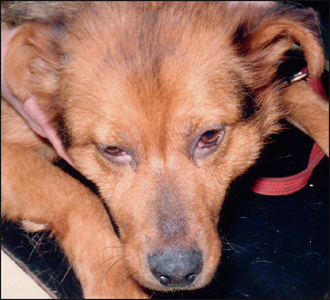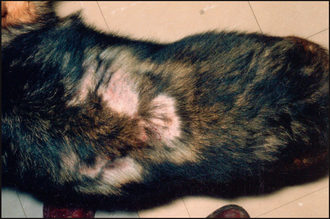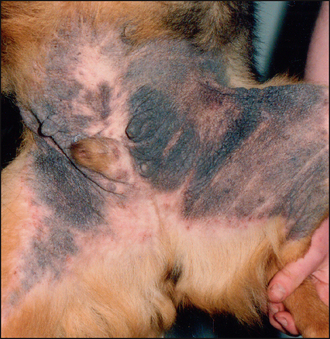43 Hyperpigmentation due to hypothyroidism
CASE HISTORY
• Initial signs of skin disease had first appeared 10 months previously, and consisted of ventral erythema and hyperpigmentation, teat enlargement, dorsal pruritus, alopecia and greasiness of the hair coat. More recently, pedal pruritus had been evident.
• The diet consisted of a proprietary tinned food, biscuit mixer and food scraps, with just water to drink.
• Previous treatment 2 months earlier with a trimethoprim/sulphonamide antibacterial, weekly benzoyl peroxide shampoos and glucocorticoid therapy had resulted in reduced pruritus and erythema, but had not affected the pigmentation and the hair coat had not improved in quality. Discontinuation of therapy resulted in recurrence of erythema and pruritus within 2 weeks.
CLINICAL EXAMINATION
• Examination of the skin revealed erythema, hyperpigmentation and alopecia over the bridge of the nose and periocular skin (Fig. 43.1).
• The presence of patchy, poorly demarcated, bilaterally symmetrical dorsal alopecia with comedones, papules, pustules and yellow greasy scaling was noted (Fig. 43.2).
• The glabrous skin over the groin and axillae was markedly hyperpigmented and lichenified, with erythema and papules evident around the margins of the hyperpigmented areas. The teats were enlarged (Fig. 43.3).






